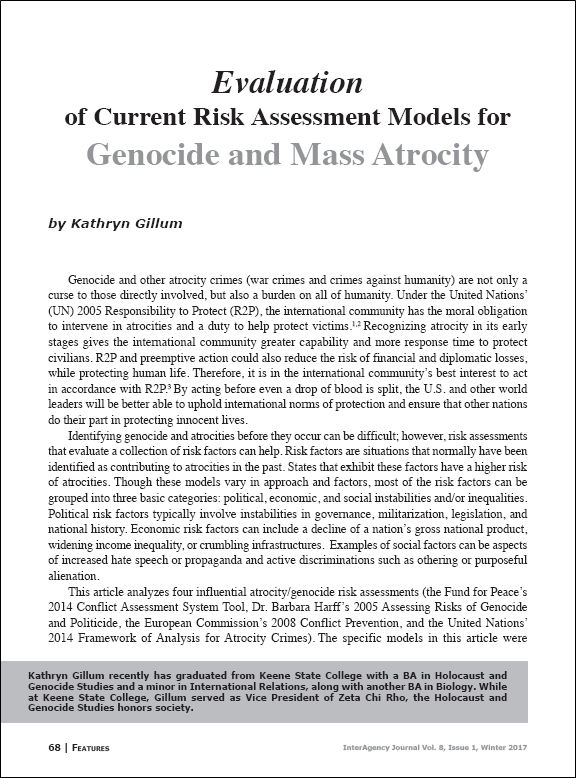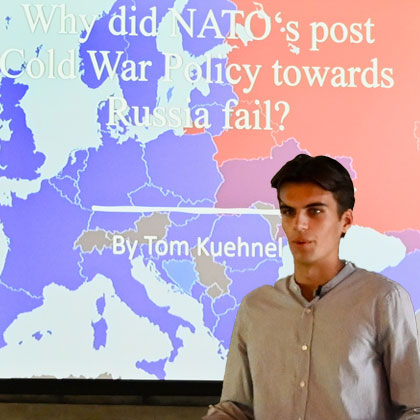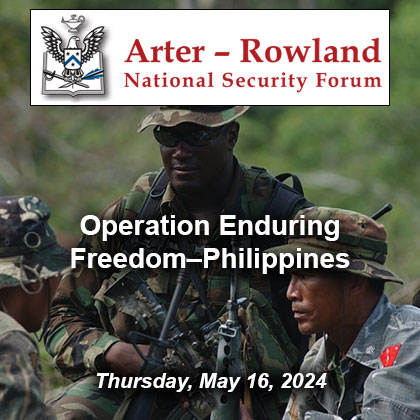Featured Article: Evaluation of Current Risk Assessment Models for Genocide and Mass Atrocity
Featured article:
Evaluation of Current Risk Assessment Models for Genocide and Mass Atrocity
by Kathryn Gillum
Genocide and other atrocity crimes (war crimes and crimes against humanity) are not only a curse to those directly involved, but also a burden on all of humanity. Under the United Nations’ (UN) 2005 Responsibility to Protect (R2P), the international community has the moral obligation to intervene in atrocities and a duty to help protect victims. Recognizing atrocity in its early stages gives the international community greater capability and more response time to protect civilians. R2P and preemptive action could also reduce the risk of financial and diplomatic losses, while protecting human life. Therefore, it is in the international community’s best interest to act in accordance with R2P. By acting before even a drop of blood is split, the U.S. and other world leaders will be better able to uphold international norms of protection and ensure that other nations do their part in protecting innocent lives.
Identifying genocide and atrocities before they occur can be difficult; however, risk assessments that evaluate a collection of risk factors can help. Risk factors are situations that normally have been identified as contributing to atrocities in the past. States that exhibit these factors have a higher risk of atrocities. Though these models vary in approach and factors, most of the risk factors can be grouped into three basic categories: political, economic, and social instabilities and/or inequalities. Political risk factors typically involve instabilities in governance, militarization, legislation, and national history. Economic risk factors can include a decline of a nation’s gross national product, widening income inequality, or crumbling infrastructures. Examples of social factors can be aspects of increased hate speech or propaganda and active discriminations such as othering or purposeful alienation.
This article analyzes four influential atrocity/genocide risk assessments…
Read the full article
Evaluation of Current Risk Assessment Models for Genocide and Mass Atrocity PDF
Download the complete edition
Kathryn Gillum recently has graduated from Keene State College with a BA in Holocaust and Genocide Studies and a minor in International Relations, along with another BA in Biology. While at Keene State College, Gillum served as Vice President of Zeta Chi Rho, the Holocaust and Genocide Studies honors society.

READ THE LATEST UPDATES FROM THE SIMONS CENTER
"*" indicates required fields


